When most people think of the Royal Air Force their minds invariably conjure up images of the Red Arrows in their beautiful shiny Hawks, the glamour of fast jets or the romance of yesteryear as epitomised by the Battle of Britain Memorial Flight, but sadly most people will have overlooked the vital work carried out by the Air Transport, (AT)/Air to Air Refuelling, (AAR) Fleet.
The RAF has a fine history of AT/AAR be it in support of military operations, peace keeping missions such as those currently on going in Southern Sudan and humanitarian aid missions such as the Berlin Airlift, African Famine Relief and more recently airlifting aid to the victims of Typhoon Haiyan in the Philippines. In today’s RAF the AT/AAR fleet comes under the command of 2 Group, (2Gp), which is headquartered at RAF High Wycombe. 2Gp is one of the three elements that make up the RAF’s Air Command alongside 1Gp (Air Combat) and 22Gp (Training), and its responsibilities include not only the AT/AAR fleet but also the Communications/VIP fleet, Intelligence, Surveillance, Targeting and Reconnaissance, (ISTAR) fleet and the RAF’s ground fighting units, the RAF Police and RAF Regiment under the heading of Force Protection, (FP) and this diversity is recognised in its mission statement which is; “To Project, Protect and Support Force Elements on Operations and exercises Worldwide”.
Following the closure of RAF Lyneham in 2012, the various squadrons that made up the AT/AAR fleets were all co-located at the RAF’s sole remaining Air Transport hub at RAF Brize Norton in Oxfordshire which is now one of the busiest airports in the UK with flights departing to far flung destinations providing an Air Bridge in support of British Forces in locations such as Afghanistan, the Falkland Islands, Cyprus, Germany, Canada and Kenya to name but a few of the many destinations. Like many UK bases, RAF Brize Norton has seen dramatic changes during the restructuring forced upon the RAF by successive defence cuts which have seen so many of our most famous RAF stations close. However, “Brize” as it is more commonly referred to by the RAF community has been lucky and rather than shrinking it has grown in to a Super-Base as one of the RAF’s key Main Operating Base’s. For many of us who have flown with the RAF, 2013 was a sad year which saw the retirement of both the VC10 and Hercules C1/C3 (C130K), and 2014 will see another of these sad days when the much loved Tristar is retired from service in March. But whilst these retirements may be seen as a time to reflect on memories of much loved aircraft they also represent the rebirth of the AT/AAR fleet making it a far more capable force that is better suited to meet the RAF’s requirements.
The current AT/AAR fleet at RAF Brize Norton consists of the following squadrons (Sqn):
- 99 Sqn – 8 Boeing C17A Globemaster III
- XXIV Sqn, 30 Sqn and 47 Sqn – 25 Lockheed Martin Hercules C4/C5 (C130J)
- 10 Sqn and 101Sqn – 14 Airbus Voyager KC2/KC3 (Airbus A330 MRTT)
- 216 Sqn – 9 Lockheed L1011 Tristar K1/KC1/C2 (Due for retirement March 2014)
The C17 is the backbone of the RAF strategic transport fleet and has proven so important that the UK MOD have purchased eight of these aircraft following the successful lease of the first four from Boeing making the RAF the second largest operator of the type after the USAF. Following Boeing’s announcement that it was closing the C17 assembly line the RAF ordered a ninth example of the type and has a tenth serial allocated for use by C17’s although the purchase of a tenth aircraft is extremely unlikely. 2015 will see the RAF’s strategic airlift capability increase with the entry in to service of 22 Airbus A400M Atlas transports which will be a huge improvement over the old Hercules C1/C3 aircraft that it replaces.

The tactical airlift capability is currently the subject of many rumours but is currently supplied by the Hercules C4/C5 which according to official reports is due to be updated to C130J Upgrade 8.1 standard and is due to remain in service until 2030. However, the high tempo of operations that the Hercules C4/C5 fleet has been subjected to has seen a quicker than anticipated problem with airframe fatigue which will no doubt have a major knock on effect that is feeding the rumours that the type may be retired sooner. Should the Hercules C4/C5 be retired early the RAF will be left without a tactical transport aircraft and more worryingly without an aircraft suitable to support Special Forces, (SF), troops with covert insertions and supply. Option One will be to simply reduce the size of the Hercules C4/C5 fleet cannibalising spares from older airframes to keep a limited number of aircraft airworthy. Option two would be for the RAF to purchase a squadron of Bell/Boeing CV22B Osprey Tilt Rotor aircraft of similar specification to those used by the USAF for SF operations, however, I believe that this option would prove too expensive. Option Three would be to use rotary wing assets such as the Chinook for SF support and whilst this may seem a cheap and attractive option it would hamper SF operations due to a lack of range and payload. The final option would be for the RAF to purchase a small tactical transport aircraft such as the Airbus C295 or Alenia C27J Spartan either of which would be excellent SF aircraft and available at reasonable prices.
The AAR capability is currently being handed over from the venerable Tristar to the largest aircraft ever to serve in RAF colours, the Voyager. Following their successful bid to supply the RAF with new tanker aircraft as part of a Private Finance Initiative, (PFI), the Air Tanker Consortium have supplied the RAF with 14 Voyager aircraft. The first of these new aircraft to enter service are the KC2 variant which has two underwing fuel pods equipped with a hose and drogue refuelling system that unlike the Tristar is capable of refuelling two aircraft at the same time. Later deliveries will see the introduction of the KC3variant which will add a fuselage refuelling pod to the two wing pods. Both variants of Voyager will be able to carry mixed loads of passengers and freight whilst still carrying out the AAR role giving the aircraft a truly multi-role capability. Voyager will give the RAF a quantum leap in capability from the Tristar and VC10 and the flexibility of the PFI contract allows Air Tanker to recoup the cost of the aircraft by utilising in a civilian capacity any airframes not currently required by the RAF for operations. However, one question that has not been answered is what effect the retirement of the Tristar will have on the AAR capability of the British Forces deployed in the defence of the Falkland Islands as Voyager is too large to fit inside any of the hangars at Mount Pleasant Airport (RAF MPA) and it is unlikely that the RAF will risk its newest aircraft being left outside in the harsh climate of the Falklands winter.
Whilst there remain some unanswered questions the future of the RAF AT/AAR fleet is very bright and its use to support French operations shows that it is fast becoming Europe/NATO’s airlifter of choice.



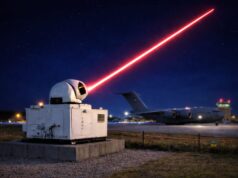
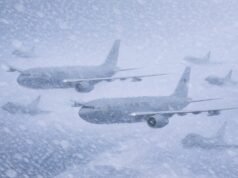
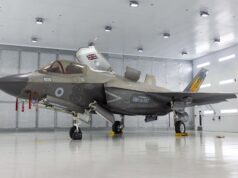
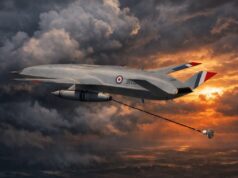
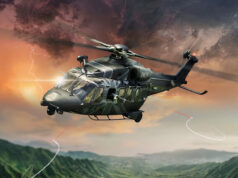





Isn’t the C-130 to be replaced by the A400M?